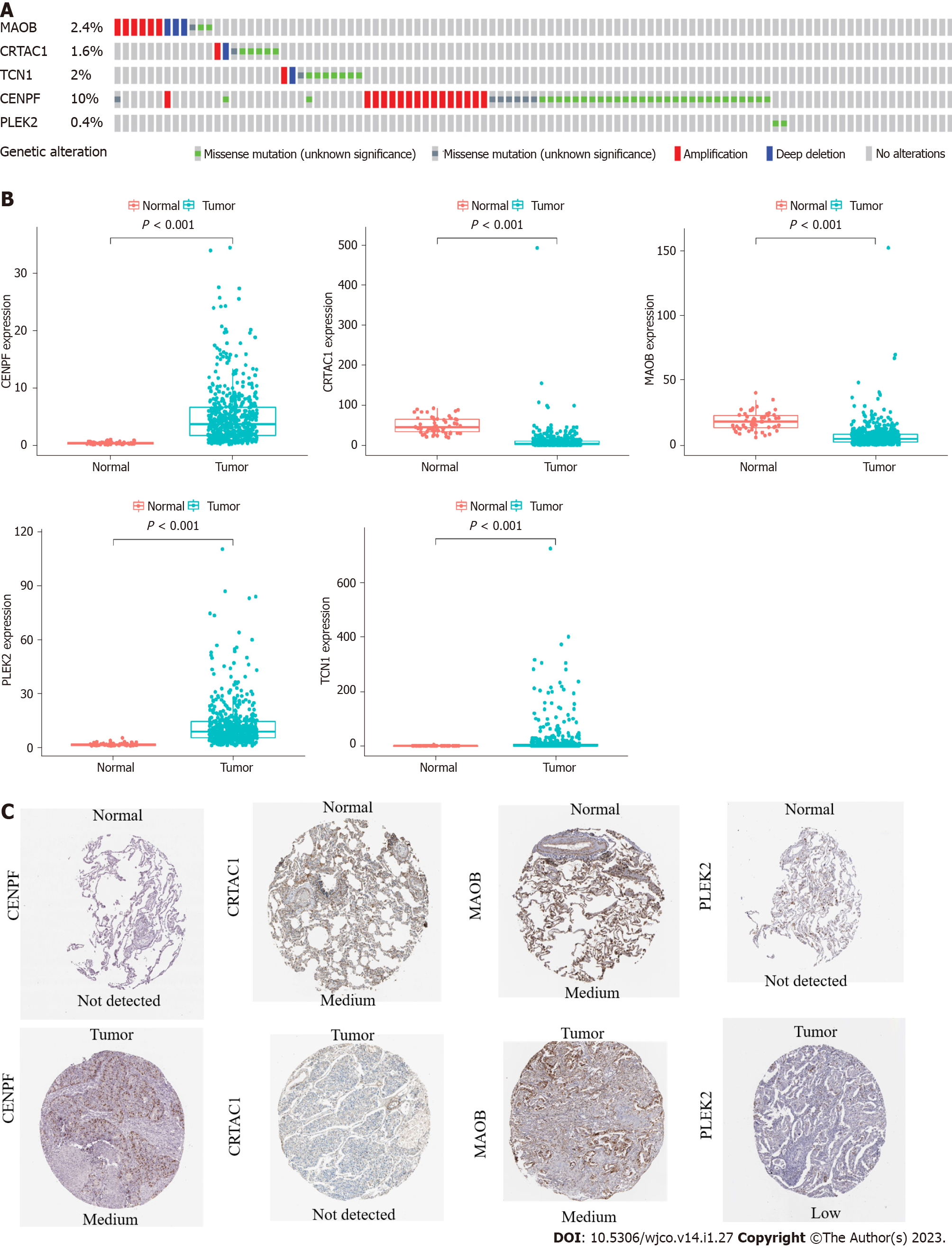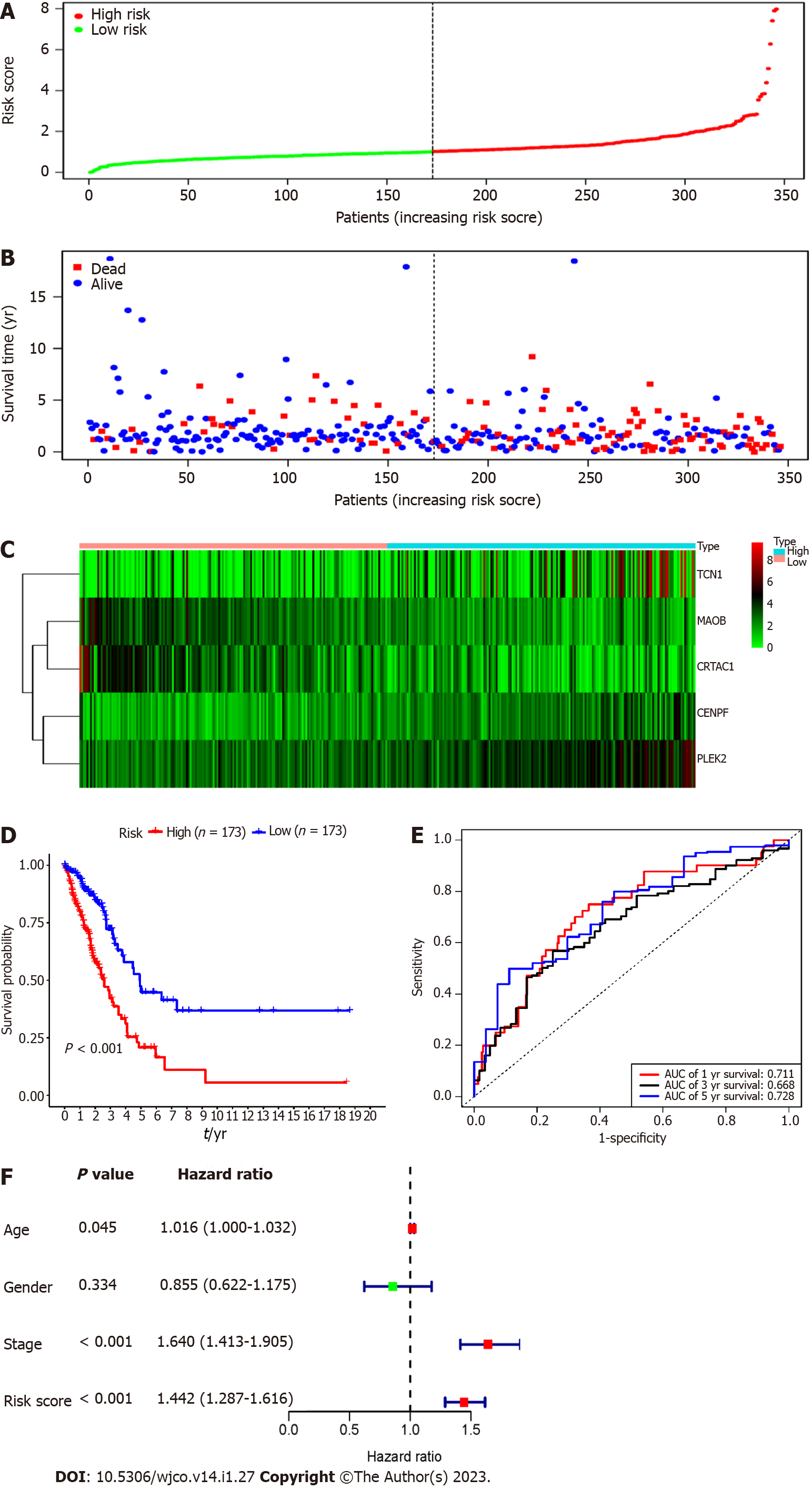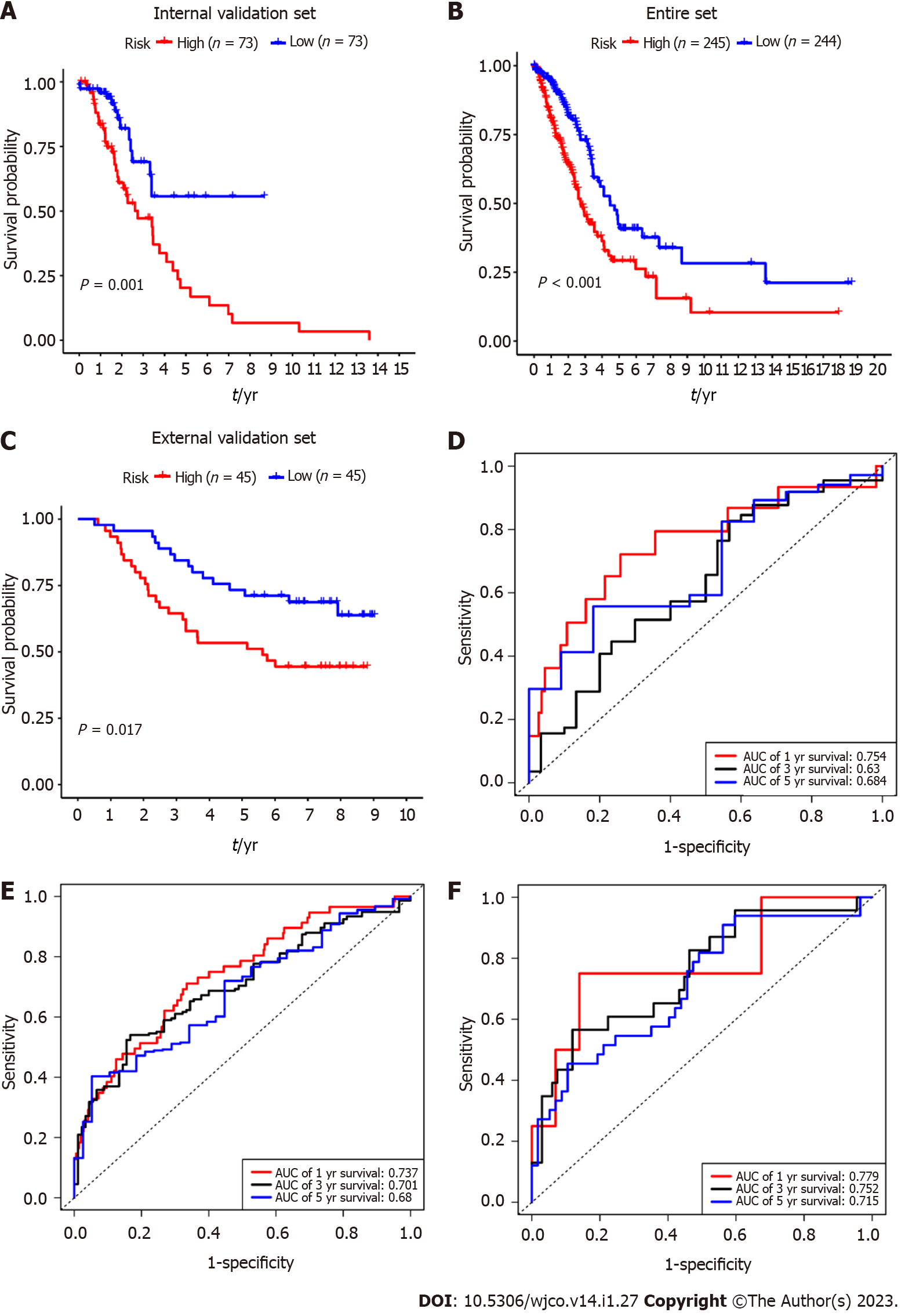Copyright
©The Author(s) 2023.
World J Clin Oncol. Jan 24, 2023; 14(1): 27-39
Published online Jan 24, 2023. doi: 10.5306/wjco.v14.i1.27
Published online Jan 24, 2023. doi: 10.5306/wjco.v14.i1.27
Figure 1 Screening of differential genes and establishing LASSO regression.
A: Volcano map of the differential genes in the GSE43458; B: Volcano map of the differential genes in the GSE32863; C: Volcano map of the differential genes in the GSE27262; D: Venn diagram of the three Gene Expression Omnibus datasets; E: LASSO coefficients profiles of 380 common differential genes; F: LASSO regression with ten- fold cross-validation constructed the models.
Figure 2 The expression and genetic alterations of the 5 prognostic genes in Lung adenocarcinoma.
A: Genetic alterations rate of 5 model genes; B: Differential expression of the mRNA levels in lung adenocarcinoma tissues; C: Differential expression at the protein levels of the five model genes.
Figure 3 Risk score model, time-dependent receiver operating characteristic analysis, and survival analysis for the 5-gene signature in Lung adenocarcinoma.
A: The risk score curve divided the patients into the high-risk and low-risk groups; B: Distribution map of the patient's survival status; C: Heatmap of model genes in high and low risk groups; D: Kaplan-Meier survival analysis of the 5-mRNA-based prognostic signature; E: Receiver operating characteristic curves to evaluate the prognostic signature; F: Multiple cox regression analysis of the risk scores and clinical parameters.
Figure 4 Internal and external validation of the 5-gene prognostic signature.
A: Internal validation by survival analysis; B: The entire dataset validation by survival analysis; C: GSE11969-based external validation by survival analysis; D: Internal validation by receiver operating characteristic (ROC) curves; E: The entire dataset validation by ROC curves; F: GSE11969-based external validation by ROC curves.
- Citation: Xia QL, He XM, Ma Y, Li QY, Du YZ, Wang J. 5-mRNA-based prognostic signature of survival in lung adenocarcinoma. World J Clin Oncol 2023; 14(1): 27-39
- URL: https://www.wjgnet.com/2218-4333/full/v14/i1/27.htm
- DOI: https://dx.doi.org/10.5306/wjco.v14.i1.27












